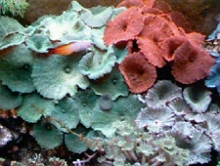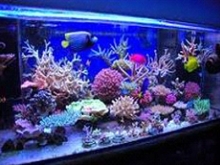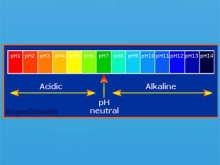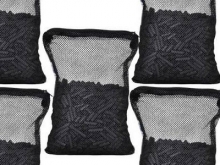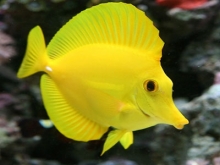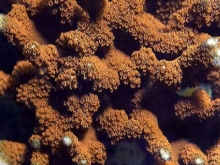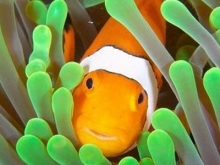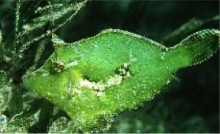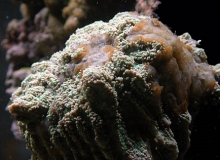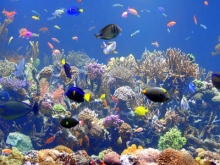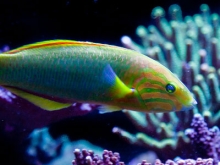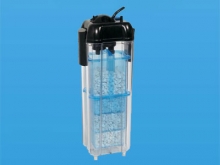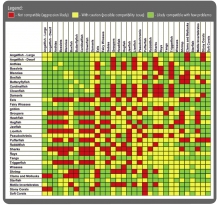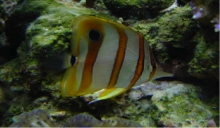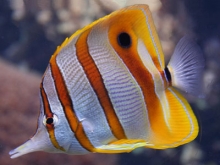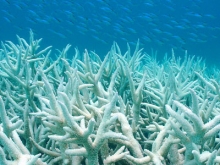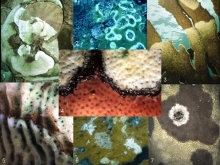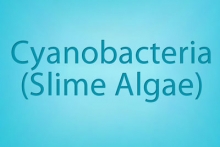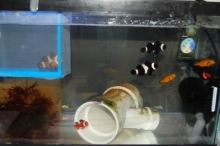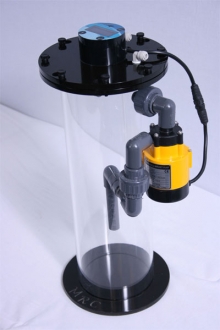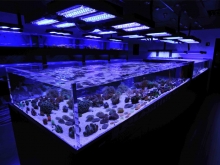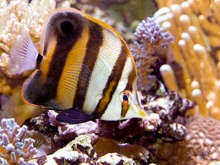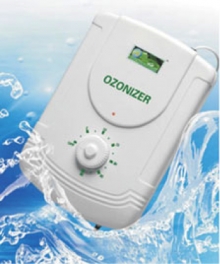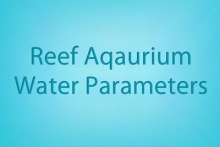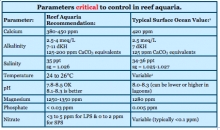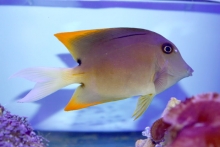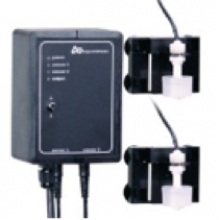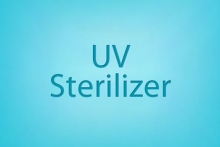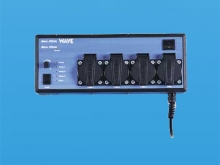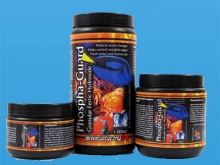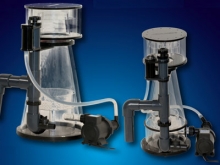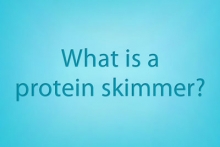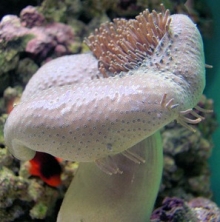4 basic needs of corals
All corals have four basic needs required to survive -- water quality, food, light, and water movement. In general, hard or SPS/LPS corals are not as flexible as their soft coral cousins, making Mushrooms, Zoanthids, Polyps and Leather Corals some of the favourites for both novice and experienced reef keepers .
A guide to keeping an SPS Tank
Knowledge. (Do your homework)
When I first started keeping SPS I did a lot of research and talked with a lot of successful reefers who had tanks I admired. I also used the Internet extensively, giving a wealth of information from various forums and sites.
Acidity and alkalinity
The initials pH stand for "Potential of Hydrogen." Water is composed of positively charged hydrogen ions (H+) and negatively charged hydroxyl ions (OH-), the pH level is a measure of the ratio of these two ions in a body of water.
Activated Carbon in the Marine Tank
The use of activated carbon in Marine aquariums has always sparked debate. In the past opinions ranged from “never use it” to “never be without it.” Today most aquarists consider activated carbon a beneficial and necessary component of their filtration system.
Best fish for Algae control
Choosing the best fish to start out your aquarium is a very important decision and will save you lots of time and money and aggravation. Making a good choice will also save lots of fish!
Best SPS Corals For Beginners
Montipora corals are the easiest of the small polyp stony (SPS) to keep! Montipora corals are considered the easiest of the small polyp stony (SPS) corals to keep. They are considered the best SPS corals for beginners, and keeping SPS corals is very rewarding for experienced reef keepers too. The first SPS corals for all new reef keepers are the Montipora species.
Breeding Clownfish
Clownfish are one of the easiest marine aquarium fish to breed. Unlike many of the other marine fish, clownfish regularly spawn in a marine aquarium. Furthermore clownfish have relatively large eggs and larvae which make rearing them a somewhat easier task as the larvae are able to eat cultured foods.
Brown Jelly Disease and Treatment
Rapid Tissue Narcosis. (RTN for short)
This is one of the fastest spreading coral diseases in your tank. When you first spot it in your tank it normally is a little brown blotch of brown jelly like substance on the head of the Coral.
Buying a Marine Tank
What to look for when buying.
When starting in the marine hobby the first decision to be made is the tank size, the saying here is that bigger is not always better does not hold true, the bigger you can afford the better, beware of so called hidden costs ie. bigger means more lighting, live rock, larger skimmer etc.
Buying The Right Fish.
Before you look at buying any fish for your Marine tank there are a number of questions you must ask you’re self.
Calcium Reactor
The addition of calcium to a salt-water aquarium is essential to coral/coralline algae growth and survival. In the oceans calcium is supplied on a continuous basis via the ocean currents at ± 400ppm (parts per million). Calcium can be added manually by regular additions or automatically using a continuous CALCIUM REACTOR.
Choosing the right fish for your tank
Before you look at buying any fish for your Marine tank there are a number of questions you must ask yourself.
Compatibility Chart
Acclimatization is highly required to reduce the possibility of stress & death fish. Three important points in terms of acclimation:
Copper Band Butterfly
Description: The Copperbanded Butterflyfish is very easily recognized by the copper coloured vertical bands over a silver body, a black eye spot near its dorsal fin and a long pointed snout.
Copperband Butterfly
The Copperbanded Butterflyfish is very easily recognized by the copper coloured vertical bands over a silver body, a black eye spot near its dorsal fin and a long pointed snout.
Coral Bleaching
Coral bleaching, what is it, and Why Does it Occur?
When corals lose their colour, it is known as "coral bleaching". Coral bleaching became an issue when it was first observed on coral reefs in the South Pacific in the 1990's. Coral bleaching also occurs in saltwater reef aquariums. So what exactly is coral bleaching?
Coral diseases and related problems
Before we start discussing Coral health and related diseases we must distinguish between the three types of corals one gets:
Soft Corals
These are the corals that have no visible skeletal structure, e.g. Pincushion, Colt corals, Kenya tree etc.
Cyanobacteria (Slime Algae)
Cyanobacteria is often called slime algae, but actually it's a slime mould.
If you have cyanobacteria in your tank, it is going to look like a thin dark red slimy mould covering the rock surfaces of your tank. This indicates that your tank has a very high level of dissolved organic matter, which is a bad thing.
Deep Sand Bed
DSB or 'Deep Sand Bed' in comparison to other filtration methods such as Under Gravel Filters.
For many years the UGF or 'under gravel filter' has been the mainstay of the marine aquarium industry and not surprisingly it still has its die-hard followers even now.
Without getting into any controversial arguments though, let me just say at this point, that I whole heartedly agree that in some tanks and under certain conditions the UGF in all its guises has and does work, So I'm not arguing as to its effectiveness at general filtration.. For reef keeping though, the UGF does have some drawbacks. Firstly in that 'by definition' a UGF requires a media of decent granular size to allow the easy passage of water through it to keep it healthy and biologically effective. This will usually consist of a grain size no smaller than about 2-3mm in size (typically crushed coral sand or gravel). One of the big drawbacks with this type of grain size is that each grain has an ideally large surface area for the colonisation of problem algae, hence the deep green tinge common in the sand of UGF run systems. The other drawback to large granular size, is that it all too easily allows quite large particulate matter/ detritus to fall between the grains which over time builds up and starts clogging the bed unless the keeper regularly Hoovers the gravel/sand via the use of a gravel vacuum. Effectively the UGF is part biological filter - part mechanical filter.
How to set up a Fish Quarantine Tank
Do I Need A Quarantine Tank?
For saltwater aquarium keepers, I would say that you definitely need a quarantine tank (sometimes called a hospital tank). Marine specimens are mostly wild caught and not used to being kept in captivity.
Hydor Powerheads
KORALIA Nano-1-2-3-4 12V is a new innovative range of low voltage circulation pumps designed by Hydor. The five models (Nano-1-2-3-4) connected to the KORALIA WAVEMAKER 2 and 4, guarantee a continuous and powerful water flow which can be directed freely thanks to the special suction magnet for great support.*
Kalk Stirer
What is a Kalk stirrer?
This piece of equipment is connected to your top-up unit that tops up with RO water.
Live Rock - The Perfect Biological Filter
What is live rock? How can rock be alive?
Live rock is rock from the oceans reefs that have living organisms living upon it and within it. Properly cured Live Rock is probably the ideal filtering method for your aquarium.
I highly recommend live rock for any type of saltwater aquarium even if it is a fish only system. Most organisms that live in the live rock are either microorganisms or burrowing organisms such as worms and small snails and stars.
On the outside of the live rock can be anything from sponges and tunicates, anemones in corals and the reason that live rock is such a great filtering mechanism is because of the bacteria that live on the rock and within it. There are just several different types of bacteria.
Live Sand
What is live Sand and how can it be alive?
Well, the sand itself of course is not alive, but there are organisms they are alive that are around the live sand and within the live sand or on top of the live sand, and most these organisms are beneficial and help to maintain a balanced aquarium. So live sand can be very important in maintaining a healthy reef aquarium, but it does have its drawbacks.
There are two important considerations when you're dealing with live sand.
The first consideration is particle size and second is the composition of the sand.
Marine Fish (Salt Water Fish)
Question
How to stop red slime algae? (General)
Answer
First check for phosphate, then silicates.
Marine Lighting Guide
The type and amount of lighting is one of the most important considerations when setting up a new marine aquarium. There are types of lighting to suit most budgets, all with their own pros and cons for specific applications.
Mueller's Butterflyfish
Common Name: Mueller's butterflyfish, Blackfin Coralfish, or Muller's Coralfish
Nitrogen Cycle
Ammonia and Ammonium.
Ammonia is largely produced by the breakdown of organic matter i.e. fish wastes and decaying plants. It can be present as toxic ammonia (NH3), also described as 'Free Ammonia', and the relatively non-toxic form ammonium (NH4+).
Ozoniser
Aquarium filtration systems have improved greatly during the last ten years and the desire to achieve the best water quality encourages today’s fish-keepers to use high flow mechanical / biological filters, large foam fractioner (Protein skimmers), U.V. sterilizers and more.
Reef Aquarium Water Parameters
Aquarists often ask what water parameter levels make for a successful reef aquarium. This article gathers these recommendations in one place, showing them in tables, as well as the corresponding levels in natural seawater.
Reef Tank Water Parameters
Water Chemistry Reef Tank Water Parameters
Aquarists often ask what water parameter levels make for a successful reef aquarium. This is the recommended levels in your reef aquarium versus corresponding levels in natural seawater.
Salinity
The Salinity (salt content) is a very misunderstood part to the success of a marine tank, as most people only top up with fresh water (RO water) once a week, making the environment very unstable by changing the water chemistry, as opposed to using a top-up system with a reservoir that tops up on a daily basis keeping the Salinity constant.
Tomini Tang
Scientific name: Ctenochaetus Tominiensis
Tangs are one of the staples in the marine aquarium hobby and for good reason. Vibrant colours, patterns, personality, ease of purchasing, hardiness for the most part all factor into the equation making many species of Tangs an excellent choice for the saltwater aquarist.
Top-Up Unit
Aqua Medic Aquaniveau.
The Aquaniveau electronic level controller may be used in 2 different modes:
Tridacnid Clams
Keeping Maxima, Crocea, Squamosa and Derasa Clams in Reef Aquariums
Aside from being some of the most intriguing of all reef aquarium species, tridacnid clams actually provide a range of benefits well beyond their beauty and novelty.
Visit our new store
We are excited to announce our new super store in open. Why not pop in and discuss your questions or concerns about your tank with our experts.
Find at 87 Umhlanga Rocks Drive, Shop 5, Arcadia (Next to Kentucky)
Also be sure to LIKE US on Facebook to receive our updates and specials.
Water temperature
As this is our first articles and we are in mid-summer I felt it was appropriate to start off with the problems of water temperature.
First of all the correct temperature for a marine tank is between 24 and 26°C. The reason for this is all coral reefs are at around these temperatures.
Wave Makers
Central to the idea of creating a more natural environment in the aquarium is the use of two or three powerheads to circulate the water completely in the tank. The advantages are:
What Are Phosphates?
Phosphate or PO 4 is a compound of Phosphorus (P), one of the top 14 out of 70 trace elements found in natural sea water that are considered to be essential for saltwater aquarium and reef tank systems. However, it is also a primary nutrient source for many forms of algae, particularly green hair species, so when high concentrations are allowed to accumulate in an aquarium, it then opens the door for aggressive algae blooms to occur.
What Is Protein Skimming, and How Does It Work?
Next to primary biological filtration, foam fractionating, better known as protein skimming, is the next most important aspect of any healthy marine system.
What is protein skimming?
What Is Protein Skimming, and How Does It Work?
Next to primary biological filtration, foam fractionating, better known as protein skimming, is the next most important aspect of any healthy marine system.
What to look for when buying a Marine Tank
When starting in the marine hobby the first decision to be made is the tank size, the saying here is that bigger is not always better does not hold true, the bigger you can afford the better, beware of so called hidden costs ie. bigger means more lighting, live rock, larger skimmer etc.
Why and how Leather Corals Shed
Some Leather or Family Alcyoniidae corals periodically slough-off a thin top layer of tissue. This shedding process is apparently not a regenerative action, but one that serves to rid the coral's surface of accumulated waste, debris and algae. Once a coral has shed what could be described as a layer of "old skin", it's not unusual for it to appear larger and more magnificent than before.
